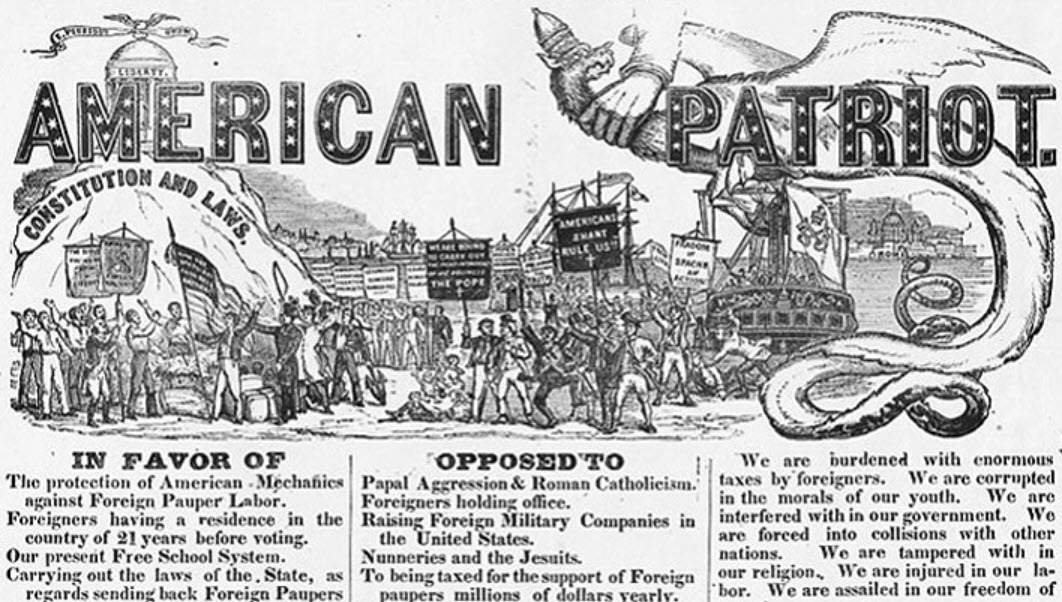Advertisement
This article describes the rise and fall of the Know-Nothing Party of the mid 19th-century.

Also known as the American Party, the Know-Nothing Party enjoyed little more than a brief moment in the spotlight, their meteoric rise was matched only by their rapid decline, leaving behind a legacy shrouded in mystery.
The Rising Tide of Fear
The origins of the Know-Nothing movement can be traced back to the growing wave of immigration that swept across the United States in the mid-19th century, particularly from Catholic-dominated countries such as Ireland and Germany. Fueled by economic hardship, political upheaval, and religious persecution, millions of immigrants flocked to American shores in search of a better life, transforming the social and cultural fabric of the nation.
For many native-born Americans, however, the influx of immigrants sparked fears of Catholic dominance, economic competition, and political subversion. These anxieties found expression in the rise of the Know-Nothing Party, which capitalized on popular discontent with the political establishment and the perceived threat posed by immigrants.
I Know Nothing
The Know-Nothings derived their name from their secretive nature and their practice of responding "I know nothing" when asked about their activities or beliefs. Operating under a veil of secrecy, the party attracted members from across the political spectrum, including disaffected Democrats, Whigs, and members of the nativist movement.
Nativism
Central to the Know-Nothing platform was the promotion of nativism, or the belief in privileging the interests of native-born Americans over those of immigrants. The Know-Nothings called for strict limits on immigration, the imposition of literacy tests and other barriers to citizenship, and the restriction of political and economic rights for immigrants.
Political Success
The Know-Nothings also espoused a broader agenda of political and social reform, including women's rights, the promotion of temperance, and the establishment of Protestant values in public life. However, it was their anti-immigrant rhetoric and nativist agenda that propelled the Know-Nothings to prominence in the 1850s.
In the elections of 1854 and 1856, the Know-Nothings achieved remarkable success, winning numerous seats in Congress and controlling several state legislatures. Their electoral victories sent shockwaves through the political establishment and raised fears of a nativist takeover of American politics.
The End Came Fast
However, the Know-Nothings' moment in the sun would prove to be short-lived. Internal divisions, conflicting agendas, and the growing polarization over the issue of slavery undermined the party's unity and cohesion. Moreover, the Know-Nothings' secretive nature and lack of transparency alienated many voters, leading to a rapid decline in popular support.
By the late 1850s, the Know-Nothing Party had largely faded from the political scene, supplanted by the emergence of the Republican Party as the primary opposition to the Democrats. While the Know-Nothings left behind a legacy of nativist sentiment and anti-immigrant rhetoric, their brief and tumultuous existence serves as a cautionary tale about the dangers of xenophobia, intolerance, and political extremism.
Related activities
Advertisement

